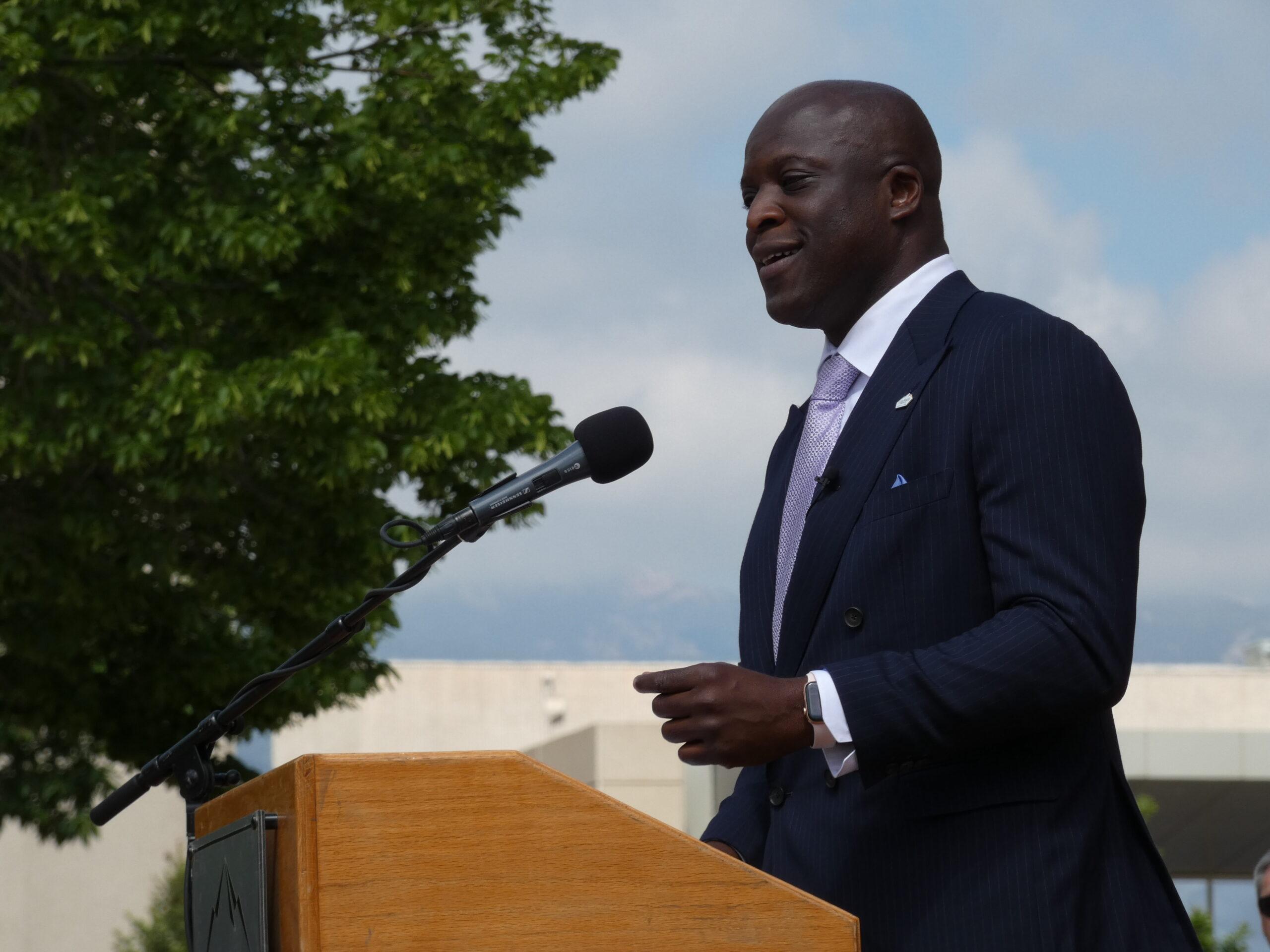
High up in the Colorado Rockies, across the Continental Divide and northwest of Leadville, is the Homestake Reservoir, and lately, things have been looking good up there. Colorado Springs Utilities put together a press tour of the region in mid-March to show where that water comes from and how they measure it to predict the year in water.
As winter’s grip begins to fade along the Front Range, water managers with Colorado Springs Utilities are closely monitoring what’s happening hundreds of miles away.
Dan Martin, a mechanic specialist with the Homestake Water Project, drives a snow cat through the White River National Forest.

“It keeps you on top of the snow,” says Martin. “There’s probably three feet of snow below us right now. It’s just like steering a golf cart.”
The tracked vehicle ambles along at about 10 miles per hour for nearly an hour, before reaching the Homestake Reservoir.
This is “as close as we can get [to the beginning],” says Patrice Lehermeier with Colorado Springs Utilities.
Abby Ortega, Planning Supervisor with the Utilities’ Water Supply Department, says the reservoir is at the headwaters of the Eagle River, a tributary to the Colorado River. Ortega says five creeks help fill the reservoir.

“The snow here flows into Homestake Reservoir,” says Ortega. “Some of it comes through that pipeline behind me, and there’s some that comes in, feeds through a tunnel on the other side of the reservoir.”
On this day in mid-March, the reservoir is about half-full, including about four feet of ice and then some snow.
“Whether the water is liquid, solid, or in the fluffy state, it’s all water, it all weighs the same,” says Mark Hanratty, a mechanic specialist with the Homestake Water Project. “And so we do it by pressure. So below the dam, we have a pressure transducer on the static pipes down below, which then tell us, ‘There’s this much pressure, we know there’s that much water.’”

Snowpack measurements help Ortega and her team project how much water Utilities is able to collect, and it’s people like mechanic specialists Dan Martin and Mark Hanratty who take snowmobiles and snow cats out to take those measurements.

They use an aluminum snow tube that’s marked with inches on the side to take core measurements, then weigh those tubes using a hanging scale to gage the water content level.
Hanratty says they take measurements about six times a year, at six different locations each time to ensure a variety of snowpack levels.
Water from the Homestake system is shared equally with Aurora, and is also used to generate electricity. Eventually, Colorado Springs’ share travels by pipeline to Rampart Reservoir and the North Slope of Pikes Peak.
For the Homestake Reservoir and watershed, as of now, levels are just below 100% of normal, which puts it in decent shape so long as this summer isn't excessively hot. Utilities says there’s currently about 2.6 years of water in storage.
Correction: The original piece said the Homestake Reservoir is where Colorado Springs gets about 70% of its water. The correction is that the Homestake Pipeline and Otero Pump Station conveys about 70% of the city’s water from multiple sources. The audio and text above have been altered to reflect the correction.









